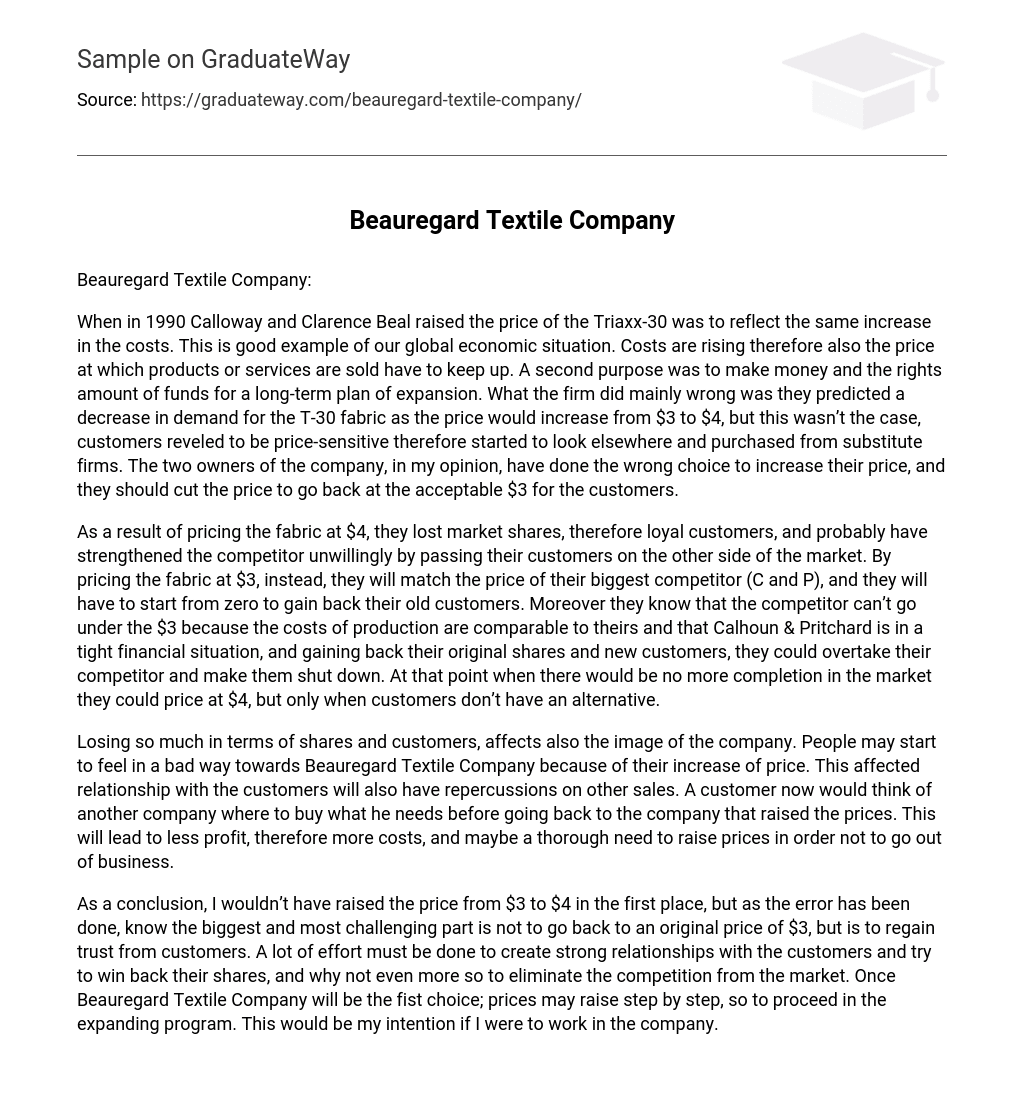Callaway and Clarence Beal raised the price of the Triaxx-30 in 1990 to account for increasing costs, illustrating the current global economic situation. Their objective was to generate enough funds to support their long-term growth strategy.
The main mistake made by the firm was their incorrect prediction that demand for the T-30 fabric would decrease when the price was raised from $3 to $4. However, customers actually turned out to be price-sensitive and began looking for alternatives from other firms. In my opinion, the two owners of the company made a wrong decision by increasing the price, and they should reduce it back to the original acceptable amount of $3 for the customers.
By pricing the fabric at $4, the company lost market shares and loyal customers, unintentionally strengthening their competitor. However, if they lower the price to $3, they will match their biggest competitor (C and P) and need to rebuild their customer base from scratch.
Additionally, the company recognizes that their competitor is limited in lowering prices below $3 due to similar production costs. Moreover, they are aware of the financial challenges faced by Calhoun & Pritchard and acknowledge their ability to regain market share and attract new customers. This scenario could potentially lead to their rival’s bankruptcy. Consequently, in a market without any competition, they would have the opportunity to increase their price to $4. However, this is only feasible if customers do not have alternative options.
The decline in shares and customers has a detrimental effect on the reputation of Beauregard Textile Company. The rise in prices could result in customers having negative feelings towards the company, which will harm their relationship with Beauregard and impact future sales. Customers will give preference to other companies for purchasing goods, causing a decrease in profits. This will lead to higher expenses for the company and potentially require additional price increases for its survival.
To summarize, it would have been ideal to not initially increase the price from $3 to $4. However, since that mistake has already occurred, the current main challenge is not to revert back to the original price but rather rebuild trust with customers. This task will require significant effort in establishing strong customer relationships and regaining loyalty. Moreover, we should strive to eliminate competition from the market so that Beauregard Textile Company becomes the preferred choice for customers. By positioning ourselves as market leaders, we can gradually raise prices as part of our expansion plan. If I were a part of the company, this would be my proposed approach.





